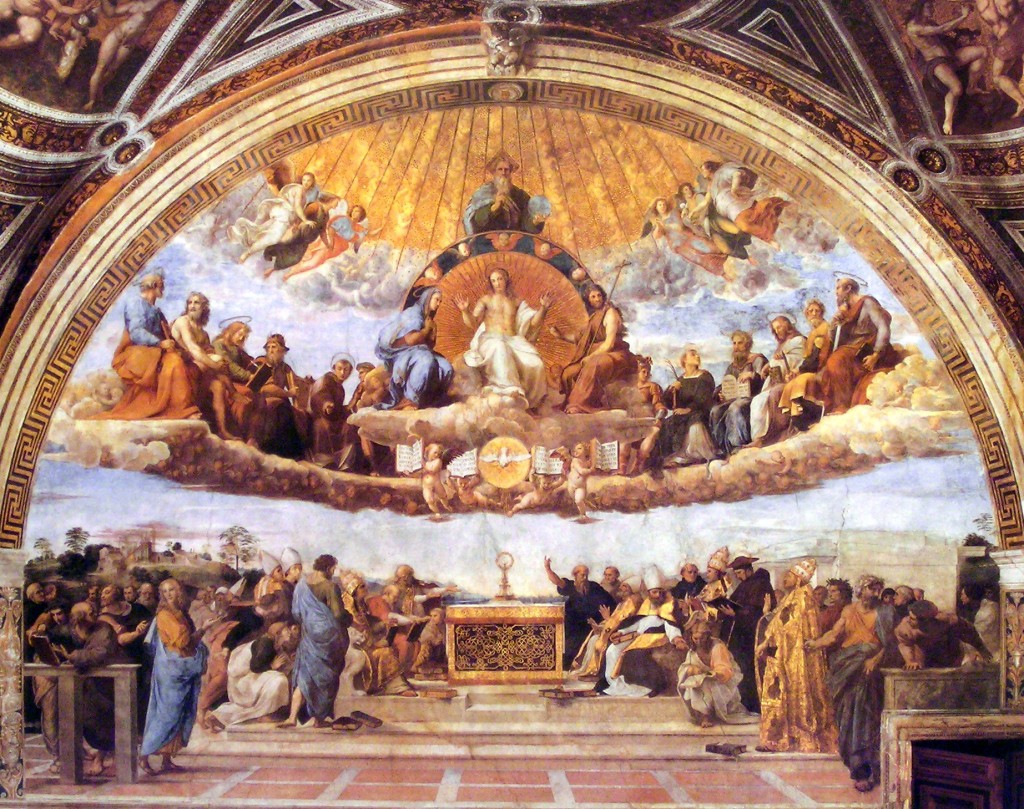Last Updated on December 1, 2011 by Editor

Mural above the altar has rich history
How many of us have purposefully arrived early to Mass for a few stolen moments of quiet meditation?
In those moments our eyes raise to the apse, that semi-circular alcove that shelters the main altar, to contemplate the painting there, an abbreviated interpretation of an old masterpiece.
We witness regular Masses, baptisms, weddings and funerals below the gaze of those figures placed there long ago, yet we know little of their history.

The story begins with the accession of Pope Julius II in the 16th century. Not wanting to use the same quarters in the pontifical palace as his predecessor, Alexander VI, Julius hired several artists to decorate a series of rooms that would become his home.
Work began immediately, and the rooms were embellished with frescoes by important artists of the day. At some point, however, Raffaello Sanzio (commonly known as Rafael in English) came on board. His work so impressed the pope that he fired the other artists and made the young man the sole person responsible for the decoration of his apartment (even painting over the work already done!).
The first wall completed (1509-1510) was decorated with a painting known as la Disputa del Sacramento (the Disputation of the Sacrament). In the fresco Raffaello depicted heaven above and Earth below.
We are familiar with the part above, which represents Christ with Mary and John the Baptist surrounded by figures of the New and Old Testaments with God the Father above.
The part not present in our apse is the lower portion depicting an altar, upon which rests a monstrance containing the Eucharist. On either side of that altar are theologians and intellectuals discussing the meaning of the Transubstantiation.
Our portion of the fresco represents “The Triumph of the Church” and depicts the Trinity through God the Father, Christ and the Holy Spirit accompanied by some of the most influential figures who contributed to the establishment of the Church: close to Jesus, Mary (mother of Christ), and John the Baptist (Christ’s cousin who heralded his coming).
Then, below from left, St. Peter (the first pope), Adam (father of all men), St. John the Evangelist, David (one of Judaism’s greatest kings), St. Steven (martyr), Jeremiah (a profit), Judas Maccabeus (the defender of the Jews), St. Lawrence (early deacon of Rome and defender of the Holy Grail), Moses (holding the tablets of the commandments), St. Matthew or Saint James (there is debate about this one), Abraham (the father of Judaism) and St. Paul (the defender of the faith).
Below these figures are depicted small angels holding portions of sacred scripture.
As soon as Raffaello had completed the work it was hailed as a masterpiece by no less than Giorgio Vassari who wrote: “Non potrebbe pittore alcuno formar cosa più leggiadra, né di maggior perfezzione. (“There couldn’t be any other painter who could create a more lovely thing of greater perfection.”)
Many visitors to St. Mary of Mount Carmel/Blessed Sacrament would agree. We must thank our parish forefathers for their gift.
— A.J. Valentini